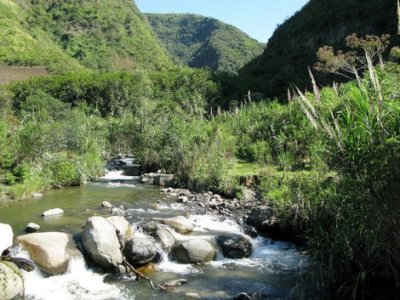09 de Noviembre de 2014
 Historically, the mining industry has played an instrumental role in our society as the primary method of mineral extraction; for developing countries in particular, the industry’s importance in generating revenue and employment is crucial. Yet, with mining comes a range of negative environmental and social impacts, and unfortunately, the developing world typically suffers the most.
Historically, the mining industry has played an instrumental role in our society as the primary method of mineral extraction; for developing countries in particular, the industry’s importance in generating revenue and employment is crucial. Yet, with mining comes a range of negative environmental and social impacts, and unfortunately, the developing world typically suffers the most.


Minería a gran escala / Crisis climática / Paramilitarismo / Llurimagua /
Proyecto Llurimagua:
Adiós Codelco... ¿Hola Hanrine? (25/11/2025)
Proyecto Llurimagua: Incendian mirador turístico que Codelco transformó en campamento minero en Ecuador (24/04/2024)
El peligroso blindaje que limita el monitoreo ciudadano de Codelco (23/05/2023)
Años de lucha comunitaria paralizan a CODELCO en Ecuador ¡Exigimos fiscalización en Chile! (05/04/2023)
Corte revocó licencia ambiental y suspendió actividades del proyecto minero Llurimagua por vulneración a derechos de la naturaleza y falta de consulta ciudadana (29/03/2023)
Codelco debe retirarse del proyecto minero en el Valle del Intag en el Ecuador (17/03/2023)
Íntag, un conflicto legal de 30 años que sigue sin resolución (14/03/2023)
Video: El Ecuador minero en la mirada del geólogo Pablo Duque (13/01/2023)
Trabajadores y comunidades protestan contra proyecto minero Llurimagua (24/10/2022)
Intag, entre el paraíso y la minería (27/09/2022)
Ecuador - Minería a gran escala
Adiós Codelco... ¿Hola Hanrine? (25/11/2025)
La sociedad civil y el mundo académico piden a la empresa canadiense DPM Metals Inc que cierre definitivamente su proyecto Loma Larga en Ecuador (20/11/2025)
Conaie y Frente Antiminero denuncian represión policial en rechazo a proyecto minero (24/06/2025)
Confederación indígena de Ecuador rechaza TLC entre Ecuador y Canadá (03/02/2025)
“El oro es un metal inútil que se usa para hacerle el juego al sistema” (01/01/2025)
El rostro oculto de Cascabel. No todo lo que brilla es oro (15/06/2024)
Proyecto Llurimagua: Incendian mirador turístico que Codelco transformó en campamento minero en Ecuador (24/04/2024)
Militares se retiran de comunidad antiminera de Ecuador tras varias jornadas de represión (29/03/2024)
Nueva jornada de resistencia contra la minería en Ecuador (27/03/2024)
Trabajadores se solidarizan con comunidades antimineras de Ecuador (20/03/2024)
Minería a gran escala
El dilema del trabajo en la minería de tierras raras en Penco. Chile (28/11/2025)
Aumenta presión corporativa sobre políticos y científicos chilenos que se oponen a mina de cobre canadiense. Chile (27/11/2025)
El dilema de un parque acorralado entre minería y forestales en Penco. Chile (24/11/2025)
El dilema del agua en la minería de tierras raras que busca instalarse en Penco. Chile (23/11/2025)
¿Qué se le cuestiona al proyecto minero de tierras raras en Penco?. Chile (14/11/2025)
La Justicia británica falla que la minera BHP es responsable de la rotura de la represa en Mariana, Brasil, en 2015. Brasil (14/11/2025)
Corte de Apelaciones admite recurso de comunidad indígena contra CORFO por consulta del litio: acusan falta de buena fe. Chile (05/11/2025)
El Gobierno no entiende: ¡Penco sin minera!. Chile (25/10/2025)
Crisis climática
El fracaso de la COP 30 no es ninguna broma. Internacional (27/11/2025)
La COP30 ofrece victorias limitadas pero cruciales a pesar de la obstrucción del Norte Global y la evasión financiera. Internacional (22/11/2025)
COP30: un Mutirão sin fuerza que se ahoga en Belém. Internacional (22/11/2025)
COP30: la Cumbre del Clima más opaca de la historia es incapaz de cumplir sus promesas. Internacional (22/11/2025)
La COP30 concluye con un acuerdo sin referencias a los combustibles fósiles tras “las negociaciones más oscuras de la historia”. Internacional (22/11/2025)
Declaración de la Cumbre de los Pueblos rumbo a la COP30. Internacional (16/11/2025)
Marcha Global pelo Clima reúne 70 mil pessoas em Belém e cobra justiça climática: “A resposta somos nós”. Internacional (15/11/2025)
En la cumbre de Belém hay más lobistas que representantes de países vulnerables a la crisis climática. Internacional (14/11/2025)
Lucio Cuenca cuestiona stand de Chile en la COP30: “Legitima a las empresas responsables de la crisis climática”. Internacional (13/11/2025)
El Pabellón de Chile en la COP 30 es financiado por un grupo de empresas privadas nacionales y transnacionales contaminantes. Internacional (12/11/2025)
Ver más:
Minería a gran escala / Crisis climática / Paramilitarismo / Llurimagua /